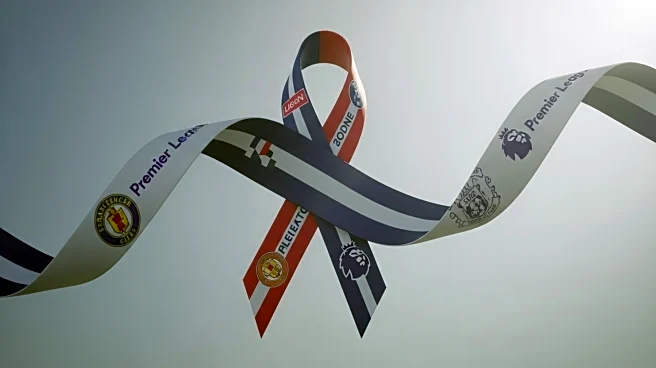What is the story about?
What's Happening?
Mental Health First Aid England has published research highlighting a 'confidence gap' in suicide prevention within workplaces. While a majority of adults express willingness to help colleagues with suicidal thoughts, only a minority feel comfortable discussing the topic. This gap poses a challenge for HR leaders who are in a unique position to foster a supportive environment. The research emphasizes the importance of embedding suicide prevention into workplace culture, policy, and practice. HR leaders are encouraged to provide training and guidance to equip employees with the skills to recognize warning signs and respond appropriately. The initiative aims to create psychologically safe workplaces where discussions about suicide are normalized and supported.
Why It's Important?
Addressing the confidence gap in suicide prevention is crucial for workplace wellbeing and employee safety. With significant time spent at work, colleagues are often best positioned to notice changes in behavior that may indicate suicidal thoughts. Silence and stigma around suicide can leave individuals isolated, increasing the risk of harm. By integrating suicide prevention into workplace culture, HR leaders can ensure that employees feel empowered to act on their instincts and support colleagues in need. This approach not only enhances mental health support but also aligns with broader health and safety responsibilities, promoting a compassionate and proactive workplace environment.
What's Next?
HR leaders are encouraged to take immediate actions to close the confidence gap. This includes normalizing conversations about suicide, equipping managers and teams with necessary skills, and embedding suicide prevention into policies and culture. Training programs such as Mental Health First Aid can provide employees with the tools to address suicide safely. Leadership plays a critical role in modeling open language and creating a supportive atmosphere. By aligning culture, training, and leadership, organizations can transform good intentions into life-saving actions.
Beyond the Headlines
The initiative to close the suicide prevention confidence gap challenges traditional workplace norms that often view sensitivity as a weakness. It promotes a shift towards valuing empathy and openness as strengths that can save lives. The approach also highlights the ethical responsibility of organizations to prioritize employee wellbeing and mental health. By fostering a culture of trust and support, workplaces can contribute to reducing suicide stigma and enhancing overall employee satisfaction.
AI Generated Content
Do you find this article useful?














